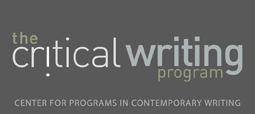Penn Professors on Writing in MEAM
Dr. Kevin Turner

About the Professor
Dr. Turner received a BS in Mechanical Engineering at Johns Hopkins University, and SM and PhD in Mechanical Engineering at the Massachusetts Institute of Technology. He is currently the Gabel Family Term Associate Professor at Penn and studies interface mechanics as well as manufacturing processes and devices for and micro- and nano-sale systems. Dr. Turner’s research addresses how various materials fail and the design of structures to prevent failure.
Important Criteria for Student Writing
Dr. Turner groups writing criteria into the following categories:
Very Important
• Originality
• Organization
• Proper Documentation
• Grammar and Mechanics
Important
• Demonstrating Mastery of Others’ Ideas
• Following the Assignment Instructions
• Reasoning and Evidence
• Proper Formatting (Font, Margins, etc.)
Moderately Important
• Style
Dr. Turner advises undergraduate students: “Think about your audience. Students often dive into their writing at a high technical level because that’s the level of detail that they’ve just read [in journal articles]. Even if your audience has an engineering background, it’s nice to build your story from basic ideas to more complex ones. It’s very easy to lose a reader quickly; don’t assume that your reader has significant knowledge in the area you are writing about."
“There’s a tendency to use too many adjectives and descriptors. Make writing simple. Simple writing is generally a lot easier to read and can be the best way to convey your ideas. We’re tempted to make things a little too complicated sometimes."
“[Students] read these great papers, and [the authors] make these points very elegantly, so it can often be very easy to use some of the language from the papers. If not cited properly, this can amount to plagiarism. It’s unintentional in many cases, but you have to be sure that when you’re taking ideas from a paper that you put it in your own words. I think that if you come up with an outline and center each paragraph around specific ideas rather than a specific paper, it’s much easier to avoid borrowing too much from a single paper. You’re combining ideas from multiple papers, so it forces you to write something more coherently.”
Personal Writing Process
“The thing that’s most helpful to me is that most of the papers we write involve figures – figures that summarize our methods and results in the form of schematics, pictures, and plots. So, I generally develop a figure set first and then make a very detailed outline. Before we try to write any text, I make sure that I have a clear outline where the key points and conclusions from each piece of data are written down. I then go back and write the text of the paper. The paper always conveys the ideas better if you start with a solid outline that contains the points you are making.
“When you submit to a journal, the paper has to be reviewed and it can be rejected, accepted, or accepted with some revisions. Usually we asked for some revisions. After that, we’ll address comments that the reviewers had – these are mostly technical, but there might be some style issues, too, in terms of things not being clear or explained properly – and edit the paper for these comments. Then we’ll write a separate piece explaining our changes to the document such that the reviewer and the editor of the journal know what we have done to improve the paper. The goal is to address any concerns that the reviewers or the editor have, and after the paper is accepted, the journal will create a proof of the article, and that’s the last chance to make final edits. From the time you start to the time of publication, it’s often a 10-12 months or at least 6-8 months.”
Other Great Writers in MEAM
“There are lots of great writers. I think the folks that are very successful as engineering and science faculty are generally very good writers as well. You can be doing fantastic work, but if you can’t convey what you’re doing clearly in papers, nobody will appreciate it. In terms of faculty who are particularly good writers, it’s hard to name names as there are many. There is a well-known chemistry professor at Harvard, George Whitesides, who has published over 1000 papers. He has written one or two short papers on how to write research papers. A lot of the points he makes in these papers are very good and can be useful for someone starting out. He’s clearly thought a lot about this and is very successful."
Links
Back to Writing in the Discipline: Mechanical Engineering and Applied MechanicsOther professors in MEAM: Dr. Purohit
© 2013 The University of Pennsylvania